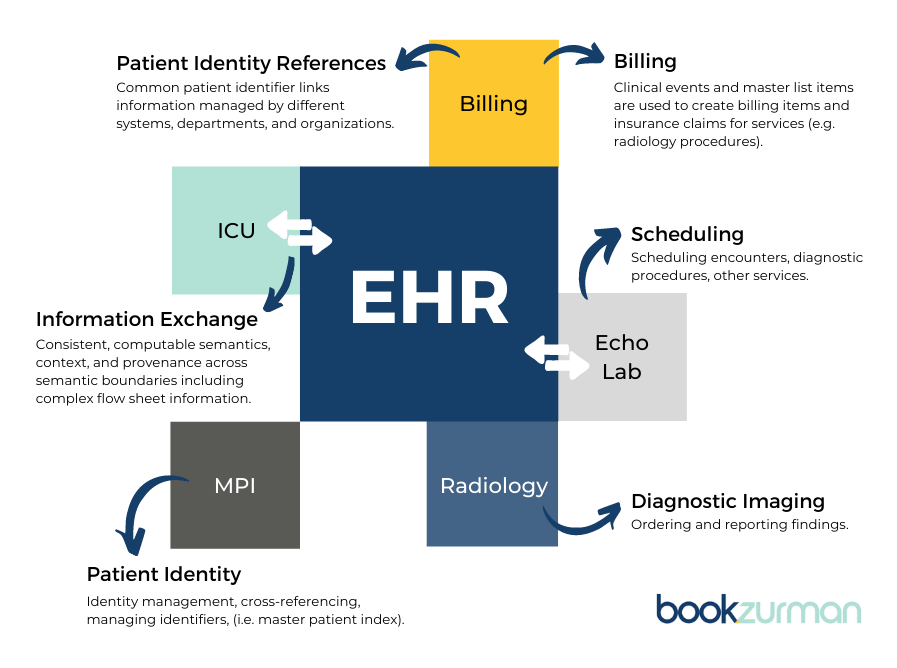Friday Feature | The Colors of Interoperability


BookZurman is proud to share a recent post featuring the insights from guest author, Ioana Singureanu, BZ's Chief Innovation Officer.
The Colors of Interoperability
Interoperability comes in many shades and colors. How organizations define and take action to become interoperable also has its own variables and sets of challenges.
One thing is clear: to become interoperable, the more knowledge an organization has about interoperability specifications, and how they apply to unique business needs, the better it can position itself to adopt true interoperability and work toward better outcomes.
When you choose a paint color for the outside of your home, you don’t just select the paint sample and your home is miraculously painted exactly that color. Just as Crayola colors or different home paint brands can be a variation on a theme of blues and greens, shades of interoperability can be just as nuanced.
Organizations working toward interoperability, must make many vital decisions from the very decision to become interoperable to actual adoption, which helps ensure the “color” of interoperability aligns with expectations.
What’s more, interoperability rules are here, but they may not have clear and precise specifications.
The New York Times published an article featuring the above, red-striped home in West London. While the motive for the paint color selection remains a debate, it’s clear that the colors don’t fit in. This is what happens if the specifications don’t work together to provide interoperability. Think about a homeowner’s association mandating that the outside of your home can only be painted in a certain family of colors. They probably aren’t going to demand that you purchase a particular paint brand or shade, but instead leave it to your discretion to how you meet their rule.
The Office of the National Coordinator for Health IT (ONC) has selected the color of interoperability by choosing HL7® Fast Healthcare Interoperability (FHIR®) standards, and now it’s up to provider organizations to make it so.
Elements of Interoperability
As a consulting firm that bridges the gap between healthcare and technology for a better patient experience, we’re confident that our subject matter experts can understand your organization’s health IT needs and empower your organization with 21st Century Interoperability.
In the work we do for our clients, we educate on how many color-coded pieces must come together to achieve process automation and information analysis – as seen in the image below. At a high level, the colors tell us that each domain may use a different stack of information exchange standards governing structure and terminology.
Each type of information must conform to structural and terminology standards to be universally understood, and some information, such as patient identity, helps tie together different data sets. To achieve interoperability, we need the complexity and diversity of information types.

Making 21st Century Interoperability Work for You
How is your organization taking these policies to intra- and inter-enterprise interoperability to meet business rules and help ensure conformance to the standards? Meeting mandates is one aspect of moving toward interoperability, but you can set your organization up for success by looking more broadly at how adopting 21st Century Interoperability can help provide better outcomes.
Once interoperability and information blocking mandates are published, the countdown for compliance starts for healthcare providers, payers, health information networks, and software developers seeking certification. To not only comply with, but work to outperform, the 21st Century Cures Act: Interoperability, Information Blocking, and ONC Health IT Certification Program rules, it’s vital to understand and appreciate the change management that comes with adopting 21st Century Interoperability.
Do you know what’s intended with the rules, and how they will affect your organization from a people and process perspective? Are you collecting and exchanging data in the right way? If rules are lax and permissive, the industry can do what it wants. Aligning with the spirit of the rules, not the letter of the law is imperative.
Choosing the right team and hiring the right interoperability partner can help make adopting 21st Century Interoperability seamless and painless for you and your organization.
When you choose a partner who understands the nuances of the rules, and the bigger picture of how using the momentum of the industry can help you not just meet mandates but create better outcomes, you’re making 21st Century Interoperability work for you.
Get to know the guest author!

Ioana Singureanu
LinkedIn
Ioana Singureanu, MSCs, FHL7, Chief Innovation Officer, has been working with BookZurman for more than a decade and is an HL7SM FHIRTM Foundation Founder. Ioana focuses her decades of domain expertise in standards development and healthcare integration to address the needs of BZ clients toward digital transformation. Ioana has assisted federal agencies (FDA, VHA, ONC, SAMHSA, NIST) to develop consensus-based specifications in applying health IT standards to national policy and regulatory requirements (using HL7, NCPDP SCRIPT, LOINC, RxNorm, NCIt, SNOMED CT, GMDN).
Additionally, Ioana is co-chair of health IT standards development organizations critical to the adoption of health IT standards consistent with the Center of Medicaid and Medicaid Services (CMS) and the Office of National Coordinator for Health IT (ONC) rules. Ioana is also co-chair of HL7 Conformance, HL7 Community Based Care and Privacy work group and a member of the HL7 US Realm Steering Committee that manages policy and governance for US-required HL7 implementation guides, guidance, and best practices referenced in the CMS and ONC rules. Ioana is an HL7 Fellow and a certified HL7 professional (HL7 V 2) and Oracle DB Administrator.






